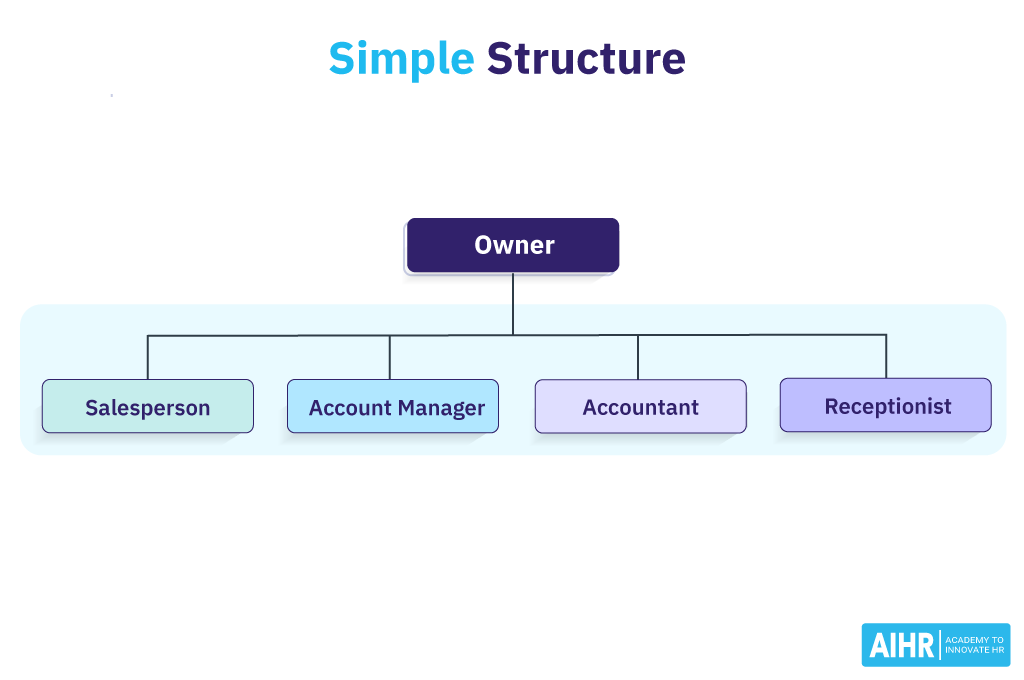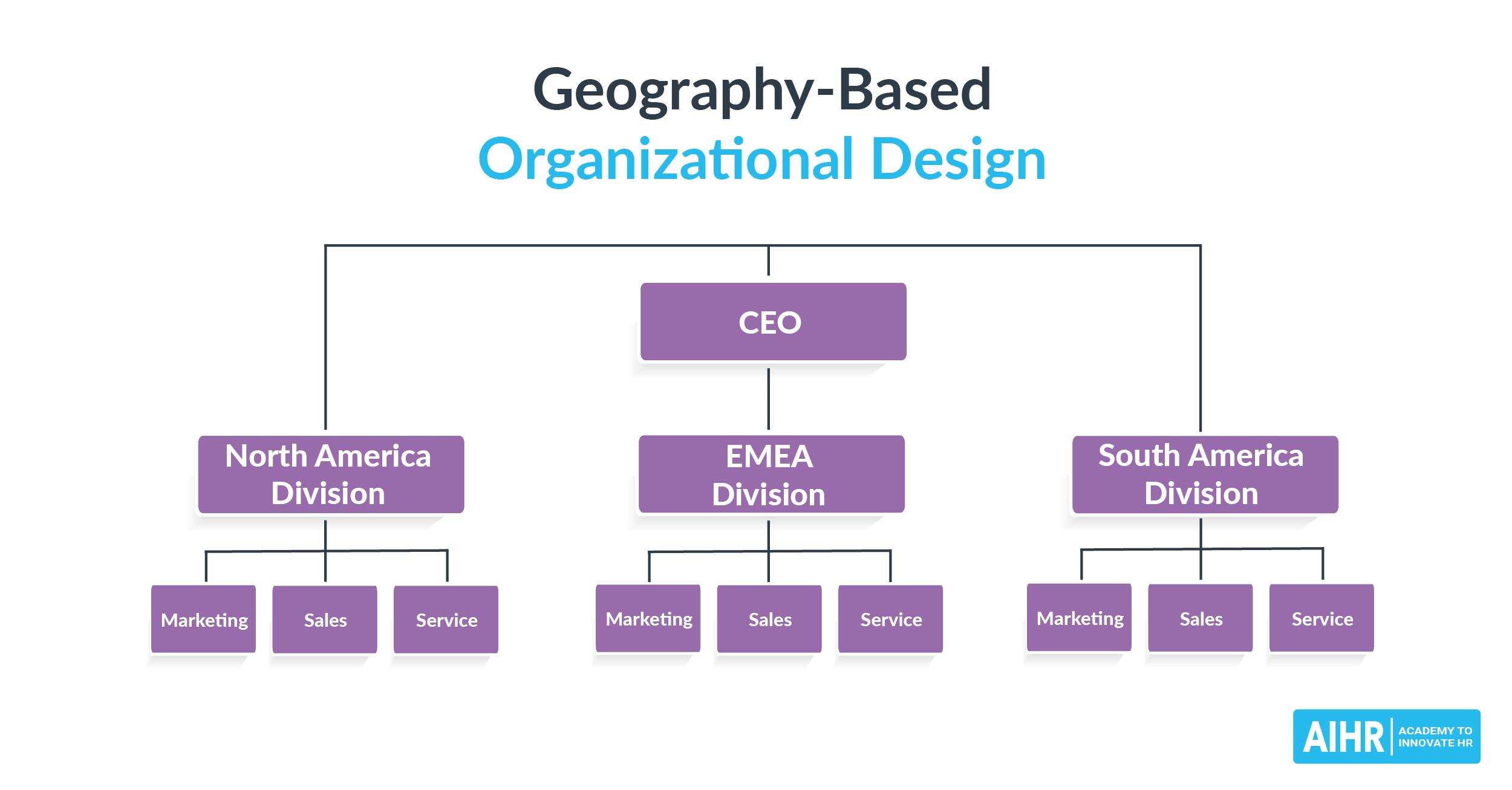Simple Structure
What is a simple structure?
A simple structure is a basic organizational system that a company uses to centralize its operations. Also referred to as the flat structure, a simple management structure is usually characterized by low departmentalization, little work specialization, extensive control, and little-to-no formalization or policies that govern operations.
In simple terms, there is no multilayered management system or formal departments in a flat structure. Instead, authority is centralized with the Founder, who delegates work to staff directly. Due to the lack of management personnel, employees must report to the business owner in case of any issues. Thus, communication is informal.
A startup is an excellent example of a flat organization because, apart from the owner, there might only be one or two employees who multi-task and oversee the work completed by other employees to ensure the business achieves its goals. Such a structure commands a high degree of collaboration.

What business size do you use simple structure in?
A flat structure is dominated by employees with the leader at the top. It’s an organizational structure that only small businesses have because managing the entire workforce as a single person is a task that the leader can only handle to a certain extent. In a startup, for instance, an entrepreneur typically implements a simple structure. Considering the size of the business, it takes no effort to set up a simple structure as it arises and functions naturally.
During this pre-bureaucratic stage, staff members perform non-specialized tasks without following written rules. The founder and employees collaborate and pitch in on an as-needed basis. Simply put, everyone is a jack of all trades. Although the organization maintains a flat structure in the early startup stage, employees may begin following a few rules and other agreed-upon working procedures as the company advances up the growth cycle.
What are the advantages of a simple structure?
There are many upsides to using a flat structure. They include:
- Increased owner control – With no departmental managers to delegate work among the employees, the single leader retains complete control of the organization. That’s beneficial for owners who prefer directing the company without having to consult other managers, which accelerates business growth.
- Improved efficiency – With no managers to consult, the leader makes decisions quickly. Additionally, they need not involve employees in decision-making unless the decision affects them directly.
- Increased responsibility – Employees in a simple structure have more responsibilities than in other organizational models. Each employee affects the business’s direction and success because there are no managers responsible for each department’s success. Thus, employees are left to manage their time, work hours, and duties.
What are the weaknesses of a simple structure?
Although a simple structure might have its benefits, it has several shortcomings. They include:
- Increased owner responsibilities – In an organization with no mid or lower-level managers, the leader is left to make all the decisions and instruct the employees. That leaves the Founder to shoulder more responsibility than any other company employee.
- Reduced employee autonomy – While it might be flexible for employees to react quicker, a simple structure centralizes power with a single leader. That prevents employees from expressing ideas and creativity required in dynamic situations.
- Potential confusion – In a flat organization, employees are likely to be confused when managing complex tasks because there’s no elaborate management structure to specify each individual’s roles and responsibilities.







